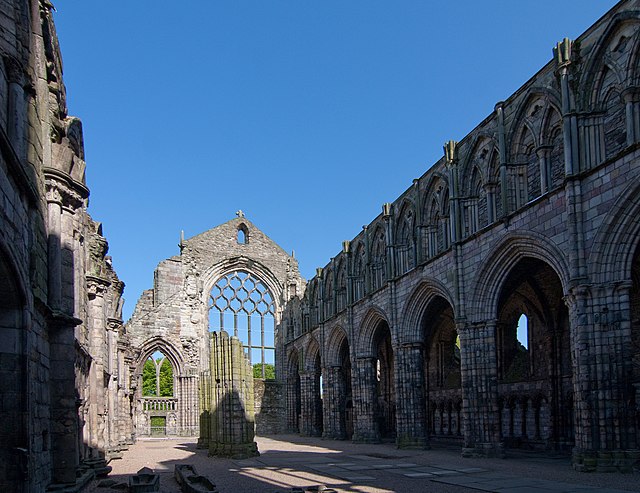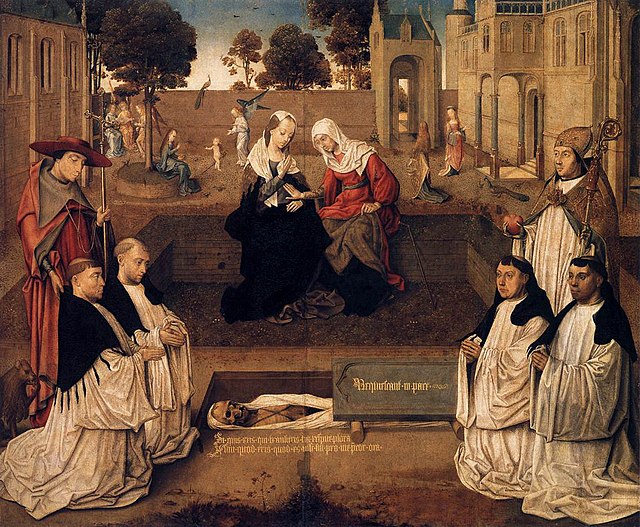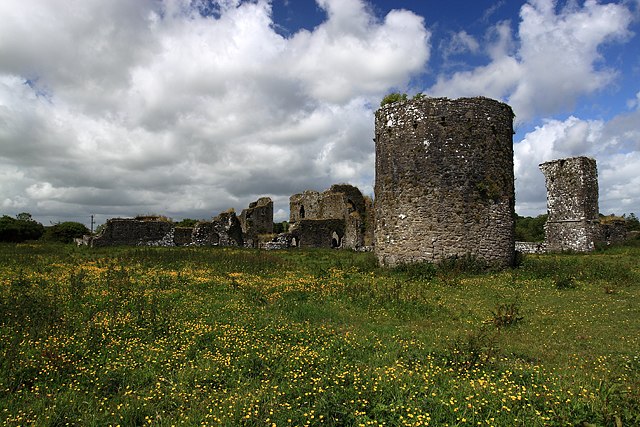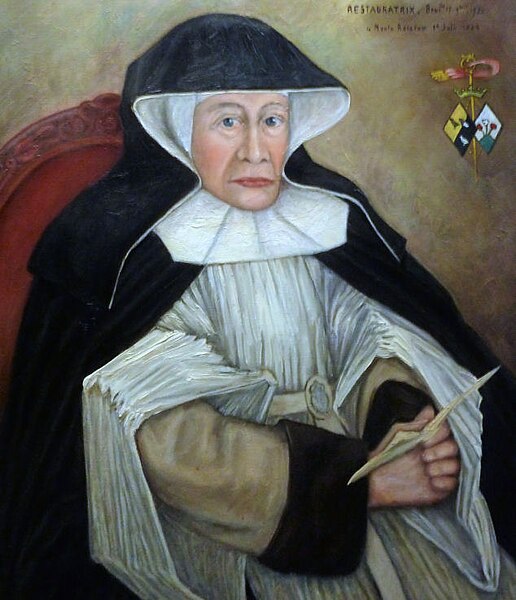Holyrood Abbey is a ruined abbey of the Canons Regular in Edinburgh, Scotland. The abbey was founded in 1128 by David I of Scotland. During the 15th century, the abbey guesthouse was developed into a royal residence, and after the Scottish Reformation the Palace of Holyroodhouse was expanded further. The abbey church was used as a parish church until the 17th century, and has been ruined since the 18th century. The remaining walls of the abbey lie adjacent to the palace, at the eastern end of Edinburgh's Royal Mile. The site of the abbey is protected as a scheduled monument.
The ruins of Holyrood Abbey
Main west door (detail) Holyrood Abbey
The Chapel Royal at the time of James VII
Sanctuary marker for Holyrood Abbey, Royal Mile, Edinburgh
The Canons Regular of St. Augustine are priests who live in community under a rule and are generally organised into religious orders, differing from both secular canons and other forms of religious life, such as clerics regular, designated by a partly similar terminology. As religious communities, they have laybrothers as part of the community.
Visitation memento mori, painter unknown, c.1500, juxtaposing pregnancy and death, with four Augustinan canons regular of the Chapter (Abbey) of Sion. Left, with little lion, is Jerome; right, holding a heart, is Augustine. Rijksmuseum
Chrodegang
Ballybeg Priory, founded in 1229 by Philip de Barry for the Canons Regular of St Augustine
Abbess Joanna van Doorselaer de ten Ryen, Waasmunster Roosenberg Abbey.








